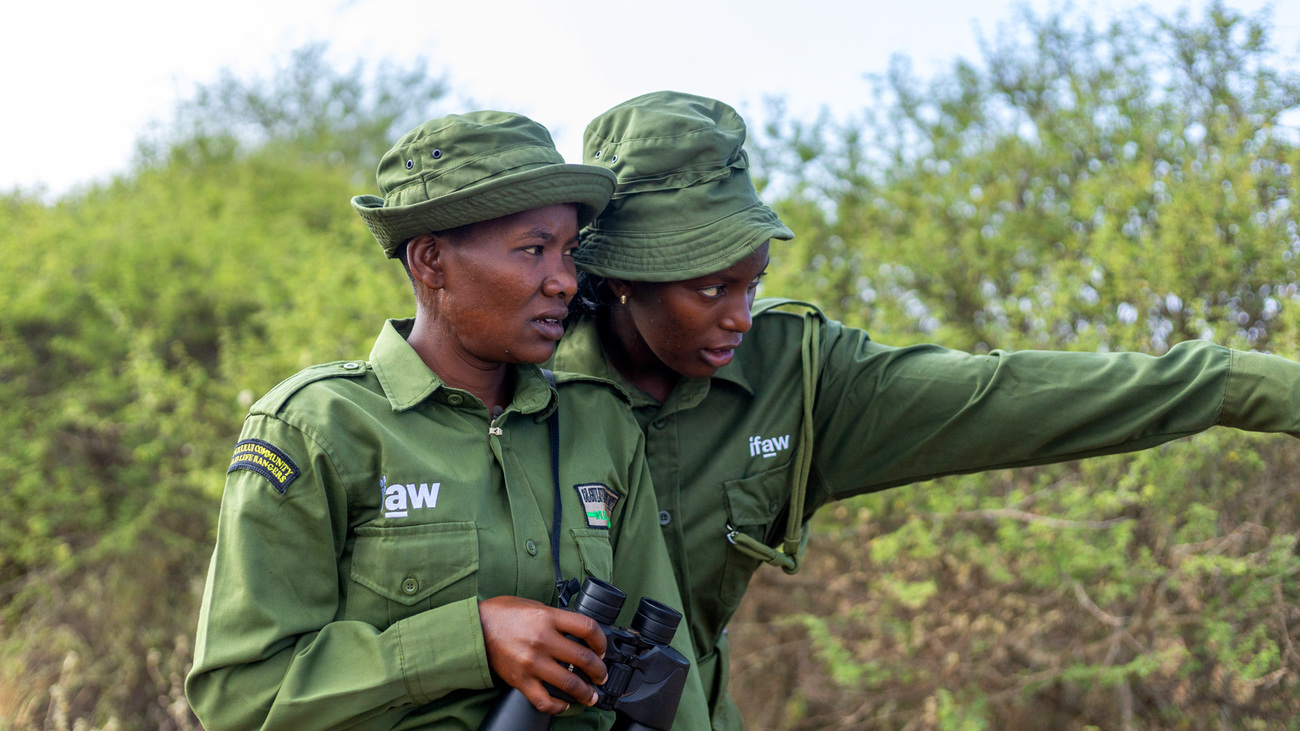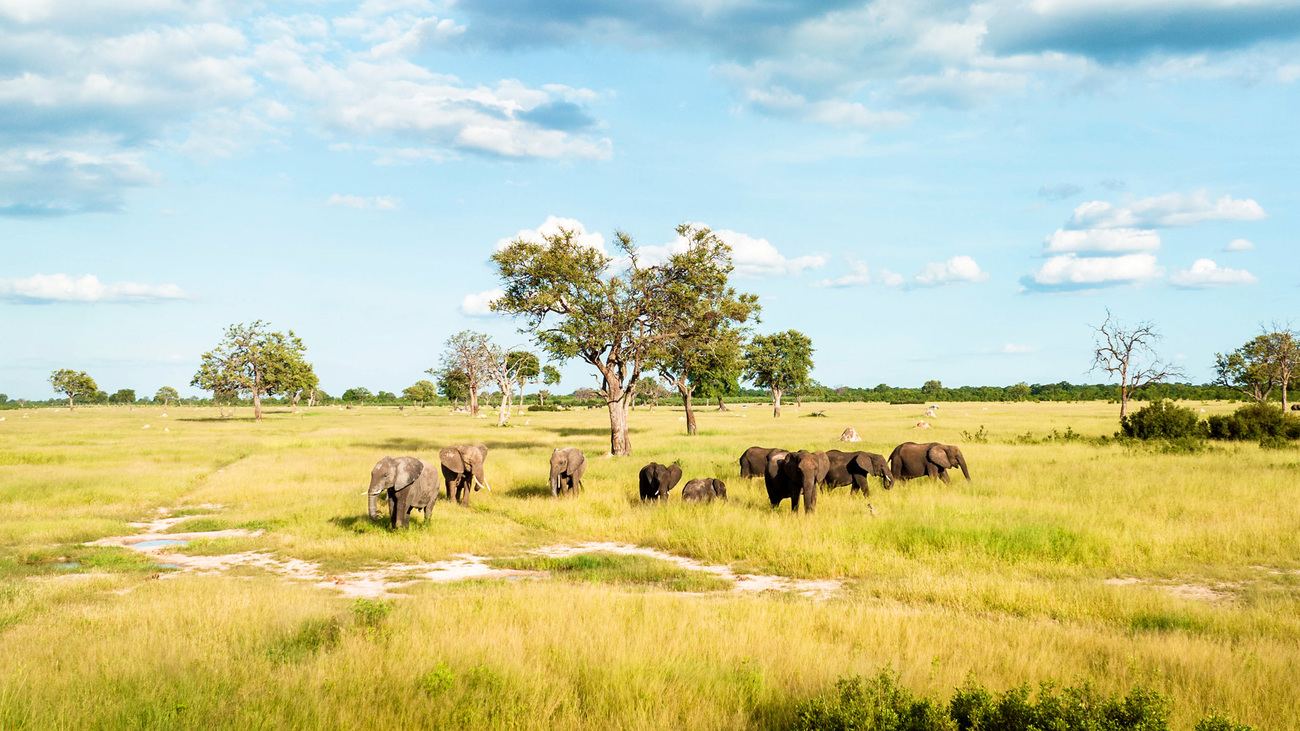Phillip Kuvawoga
Why local values must lead the way in landscape conservation
Why local values must lead the way in landscape conservation
I grew up in the protected areas of Zimbabwe’s Hwange National Park, where my father served as a ranger, scout, and warden for over 40 years. As a boy, I explored some of the country’s most stunning natural heritage and listened to my father’s stories about protecting it. These experiences spurred me to join the Zimbabwe Parks and Wildlife Authority after university, the beginning of my career in landscape conservation.

But my drive to protect the land for future generations doesn’t come only from a childhood spent swimming in the Mutorahuku River and herding cattle in Churumanzu. My perspective is also greatly influenced by a core part of my cultural identity: my totem.
In Zimbabwe, the totem system (mitupo, in the Shona language) is a deeply ingrained cultural practice where a clan adheres to shared norms and values. Individuals belong to a totem as well as a family, a community, and other forms of identity, making it a vital part of our cultural fabric.
How totems influence conservation
Each totem is associated with a different animal (for example, the elephant, monkey, or lion) or body part (such as the heart or leg) that has special significance for its people. People feel honoured to belong to a particular totem, which builds a great sense of pride and stewardship, particularly for that animal.
I belong to the lion (Shumba Mhazi) totem, an association that forms the foundation of my compassion for nature and my drive to protect wildlife and the landscapes on which we depend.
Historically, the totem system protected natural heritage, such as mountains, forests, rivers, gorges, and springs. Because people belong to different totems and associate themselves with parts of the environment, the system supports healthy ecosystems and thriving biodiversity.
People have sustainably used the environmental resources around them, coexisting with wildlife and the landscape in ways that helped species—like elephants, lions, and other fauna and flora classed as endangered and vulnerable today—thrive and be abundant for centuries.
Conservation with a human face
Many communities that live close to nature, wildlife, and wildlands hold cultural symbolism, a core part of people’s identities. If landscape conservationists don’t engage in ways that respect and centre those value systems, beliefs, and cultures, our programmes will never produce results on the scale we need.
Reimagining the interdependent connectedness between people and nature requires exploring landscape conservation through a cultural lens. The idea is to recognise that wild areas are places for spiritual admiration by local communities. They are places of worship, rituals, and ceremonies. Members of the community protect sacred natural sites through restricted and limited access. As a result, landscapes are sustainably managed, and anthropogenic disturbances—such as harvest pressure, deforestation, uncontrolled fires, and pollution—are minimised.
Local people use and derive benefits from natural resources; they also understand that the resources must last for generations to come, incentivising them to manage their heritage sustainably.
Developing our deep understanding of the relationships and interactions between people and their local natural resources is essential for protecting landscapes and species now under threat. This is people-centred conservation, or what I call ‘conservation with a human face’.
The problem with ‘fences and fines’
In the past, many governmental wildlife-management entities took the opposite approach: fences and fines. This is where you try to protect the land by fencing off the traditional landscapes, arresting anyone who crosses them, and issuing disproportionate penalties.

Even if protected areas and national parks are not fenced, under this approach, there’s a big difference in how local people can use their traditional lands. Access to the parks and wildlands is priced exorbitantly, and most of the local populace become bystanders who play no part in the park’s socio-political economy.
Protecting these lands and wildlife is unquestionably necessary, but how can we better empower the local people as stockholders and custodians of these lands? We urgently need to address this question as we plan to deliver the 30x30 commitment—to conserve at least 30% of the Earth by 2030.
Participation versus empowerment
Community participation in landscape conservation is important, but our goal should be community empowerment and leadership. Local people have been leaders in managing their natural resources since time immemorial, and that shouldn’t change now.
One fantastic example is the Maasai community in Kenya. As pastoralists, the Maasai people have lived closely with wildlife for centuries. They have found ways to coexist. For instance, when a lion makes a kill, the Massai people chase the lion away but take only a portion of the meat. They don’t take the whole animal because they know that will encourage the lion to make another kill. Instead, they share the meat.
But over the past few generations, the landscape the Maasai share with wildlife has become fragmented due to anthropogenic and bioclimatic pressures. This creates a huge problem for animals migrating or roaming across large tracts of land to find food and water, such as African savannah elephants.
IFAW’s visionary Room to Roam initiative looks at this problem with a long-term view. We’ve worked closely with Maasai leadership to find ways of setting aside the land for conservation, reconnecting these fragmented landscapes while ensuring communities benefit financially.
And they don’t just benefit in the short term. We’re supporting women’s leadership development through Team Lioness, one of Kenya’s first all-women ranger units, and their economic development through our Jenga Mama and Inua Kijiji projects.
With more financial stability and a greater voice in their communities, the women involved in these projects have more resources to educate their children, protect wildlife, and enhance coexistence while preserving their cultural heritage.
Five questions people-centred conservationists should ask themselves
- What are the touchpoints in conservation projects that will make them accessible and sustainable for local communities?
- What unspoken power structures can make or break a project?
- Are we agile enough to adapt when a project doesn’t fit with a community’s needs, beliefs, or way of living?
- Are we open to learning and challenging our assumptions?
- Do our projects allow and encourage robust and transparent feedback from communities?
What would you add to this list?
Related content
Every problem has a solution, every solution needs support.
The problems we face are urgent, complicated, and resistant to change. Real solutions demand creativity, hard work, and involvement from people like you.